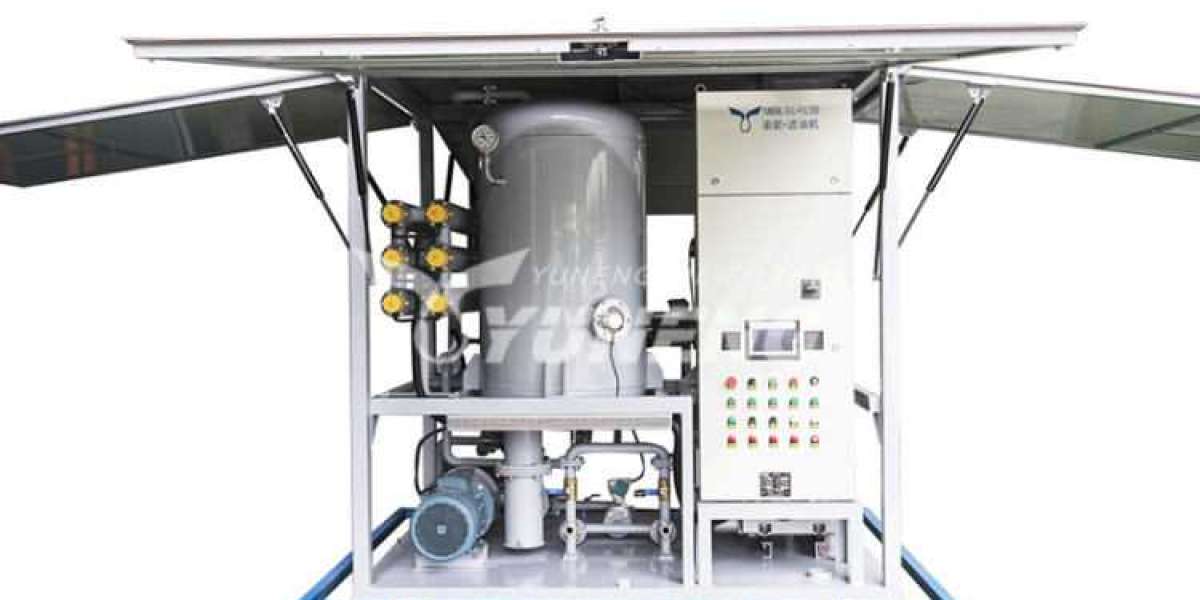Transformer is one of the main asset in the electrical power industry which needs to be maintained for guaranteed uninterrupted power transmission in order to get assured revenue benefits. Transformer oils are important for the functional transformers and are the dielectric substance that helps in maintaining their temperature. Transformer oils are vital for the proper running and functioning of the transformers.
About Transformer Oil Filtering:
Transformers require filtered and dried oil. During its usage, the insulating oil absorbs moisture and gets polluted by sopping fibers, dirty particles, aging products, and soot. Even unused oil is not clean enough as it may have absorbed moisture from the air or may have got polluted in the barrel it was stored in. The efficiency of the oil as an insulating material is highly reduced as the moisture level increases. Hence, transformer oil filtering is an important process which eliminates solid particles, dissolved gasses, and dissolved water. The electrical properties of the oil can be enhanced by filtering, dehydration, and degassing. Oil Filtering keeps the transformer in good condition and increases its life.
The Need for Oil Filtration:
The increasing rating requirements of modern transformers Oil Filtration machines and electrical apparatus results in greater electrical stress in insulating material and fluids. In order to handle these greater stresses, oils are required to have better dielectric strength, and lower residual water content must be maintained. The timely and proper treatment of these insulating fluids will result in the improvement of the properties of the entire insulating system of power transformers. The principal functions of the insulating fluid are to serve as a dielectric material and an effective coolant. To perform these functions, the insulating fluid must have specific necessary qualities at the time of initial impregnation and filling at the factory which must be maintained at the same quality level in field operation if optimum performance is to be assured.
Almost 75 percent of the transformer failures happen due to contaminated and deteriorated oil. It is important to filter the transformer oil. Regular maintenance is of utmost significance as it is a great financial burden to replace or repair the transformer. Ignoring transformer oil filtering can lead to:
Arcing
Overheating, which reduces electrical efficiency as well as the life of the transformer
Corona Discharges
Decrease in insulating strength of the transformer oil, and more
The Quality Parameters of Transformer Oil:
The fundamental quality parameters of transformer insulating oil are:
Color; e.g., ASTM D1500
Dielectric breakdown voltage; e.g., D 877, ASTM D1816
Dissolved gas analysis; e.g., ASTM D3612
Dissolved metals; e.g., ASTM D7151
Flash point, fire point; e.g., ASTM D92
Interfacial tension; e.g. D 971
Furanic compounds; e.g., ASTM D5837
Karl Fischer moisture; e.g., ASTM D1533
Liquid power factor; e.g., ASTM D924
Neutralization number; e.g., ASTM D974
Oxidation inhibitor content; e.g., ASTM D2668
Polychlorinated biphenyls content; e.g., ASTM D4059
Relative density (specific gravity); e.g., D 1298, ASTM D1524
Resistivity; e.g., ASTM D1169
Visual examination; e.g., ASTM D1524
The Oil Treatment Processes:
Mainly there are three types of oil treatment processes:
Filtering
Purification with Drying Process
Regeneration or Reclamation with Degassing
The Filtering Process involves transformer oil filtering at a temperature of about 40 degree Celsius. The process filters fine contaminated particles with the help of a filtering device.
The Purification with Drying Process heats the oil to a maximum temperature of 90 degree Celsius and removes acidic polar components from the transformer oil. A process of degassing under vacuum follows.
The Regeneration or Reclamation with Degassing is similar to the Purification with Drying Process but uses extra oxidant additives. This is the most effective method by which the oil can be regenerated in a cost effective manner. However, the safety of the environment must be considered before undertaking this process.
Advantages for transformer oil purification
Here is we have listed some advantages for transformer oil purification:
Improved insulation properties of the oil and hence the other media like paper/cellulose insulation
Better the insulation of transformer, longer the life of the transformer and lesser the breakdown of the transformer
Longer the life of the transformer asset, good returns on investment of the asset
Lesser breakdowns and failure of the transformer results in uninterrupted power supply



